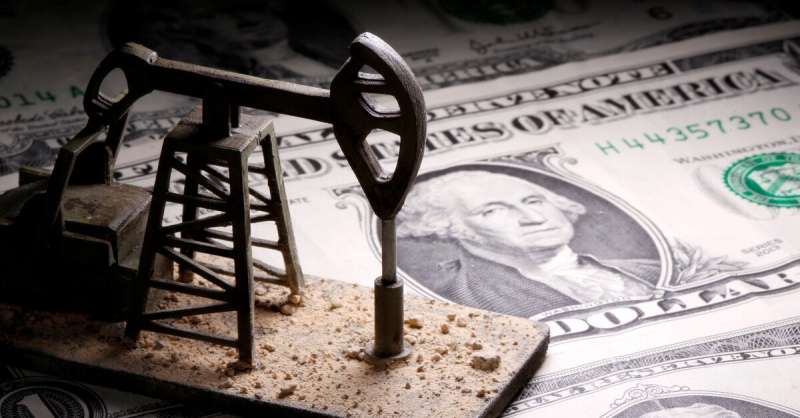
Date: Wed, 3rd June 2020
Author: Bloomberg
Source: businesstimes.com
With negative prices hanging over energy markets long after oil's unforgettable crash below zero, crude has staged a rapid recovery after a deal by the biggest producers was made to curb a surplus, yet still leaving the US$600 billion global gas market extraordinarily oversupplied. With a plunge in demand and storage near capacity, the situation provides suitable conditions for negative prices in several regions, and the worst is expected as speculated by traders and analysts.
This indicates the potential, or the lack thereof, for the global energy industry to recover from a pandemic-fuelled slide in demand. Unlike the oil market, there's been no signs of coordinated response to address the glut; the fallout could be deeper and longer.
Guy Smith, head of gas trading at Swedish utility Vattenfall said, "We are in uncharted territory with low demand levels and high storage stocks. In the shorter term there is real risk that conditions may be set to allow negative prices in Europe, but only in the very short term."
The key factor is the lack of storage to absorb excess supply, like oil's brief plunge in April below minus-US$40 a barrel. Traders and analysts predict that Europe would most likely be the first market to hit that crisis point, producing ripple effects for buyers and sellers from the US to Asia.
In recent years, Europe is known as the "sink" for global gas - balancing booming output from the US with the increasingly energy-hungry economies of Asia, led by China. This was possible with a deep bench of buyers across utilities and trading houses and flexible infrastructure that both import and export cargoes.
However, according to data compiled by Gas Infrastructure Europe, this may soon pose as a challenge as inventories across Europe are at a seasonal record of 73 per cent capacity, versus the five-year average of 45 per cent.
In specific, an European market has come to attention as the most likely to go negative. While the world's four major indices have converged near historic lows, the UK's National Balancing Point is the weakest, with the next-day contract recently dropping to the equivalent of about US$0.99 per million British thermal units.
Also, European prices are expected to flip negative in the prompt contracts - such as within-day or day-ahead rather than contracts further out - when storage injection rates are low and demand is weak due to mild, windy weather, according to Nick Boyes, an LNG and gas analyst at Swiss utility and trader Axpo Group.
Several estimates have Europe's storage facilities hitting capacity, early as next month. Analysts at Morgan Stanley and S&P Global Platts envision it getting close yet missing it. Even then, sub-zero prices are a possibility even if hitting "tank tops" is avoided.
Jonathan Stern, senior research fellow at the Oxford Institute of Energy Studies reported, "It may require a short period of negative prices to make suppliers understand the gravity of this situation - and this is before storages are completely full."
Certainly, there are several signs that supply is easing. Buyers of US liquefied natural gas have done away with dozens of cargoes due for the summer. When global LNG export growth halted years of expansion last month, shipments from states such as Malaysia, Brunei and Norway dropped.
According to FGE's Mr Siau, overall, there hasn't been a large enough output curb to balance the market preventing a further price slide. Flows from top-exporter Russia through its Yamal-Europe pipeline fluctuated at the end of May but marked up again this month.
Keyword : sterlinghousetrust.com, Sterling House Trust, SHT
Sterling House Trust is a private trust with a difference. It offers its members an exclusive and reliable platform to access unique opportunities and lifestyle services reserved for the select few. With its team of professional managers Sterling House Trust constantly scans the markets and collaborate with reliable global partners to create a portfolio of carefully curated programmes for its members. Members can access these programmes according to their individual needs, interest and financial capacity. Sterling House Trust is headquartered in Auckland, New Zealand, and has operations based in London, UK.
The Sterling House Trust platform was established with the objective of providing its members, secure access to opportunities across a range of global locations, sectors and services.

Our unique Platform was established within the framework of a trust so that the trust would have oversight and governance over the range of services and its quality. Member protection is a core principle and drive in all that we do. Our trustees ensures that the interests and quality of service provided by the Platform are always maintained at the highest standards.
The trust and its trustees provide robust oversight and is constantly on the move to identify and shortlist select opportunities in the international markets. Likewise, we apply the same stringent standards in identifying and selecting providers and professional partners to join our Platform.
The Sterling House Trust Platform utilises our international footfall and relationships to provide our members with access to a range of international opportunities via our global network which covers a broad range of sectors including:
Asset protection, international property ownership and management, alternative and direct ownership, estate planning, banking services, foreign exchange, card services, alternative investment and lifestyle services.

New Zealand Head Office
31/335 Lincoln Road,
Addington
Christchurch
New Zealand
London Office
14-16 Dowgate Hill,
London,
England EC4R 2SU